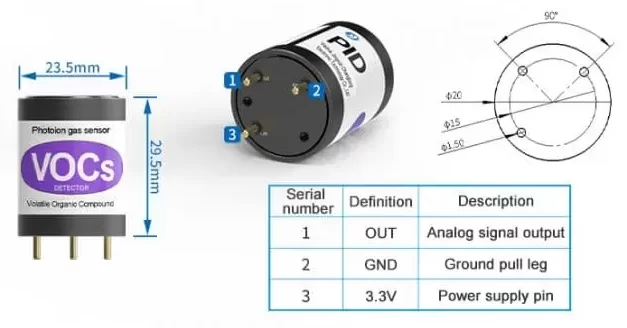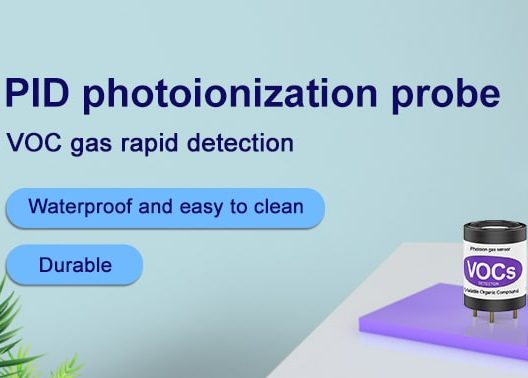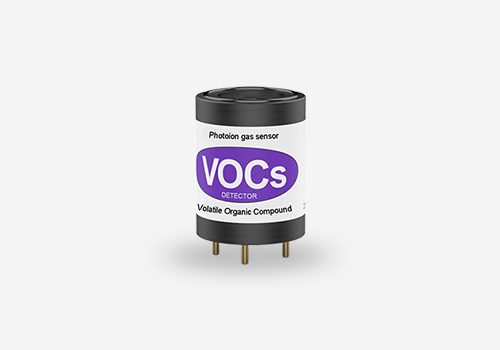Volatile organic compounds (VOCs) are a diverse group of organic chemicals that can have both short- and long-term adverse health effects on humans and the environment. As a result, the detection and monitoring of VOCs are of paramount importance in various industries, environmental protection, and occupational safety. One of the key technologies used for VOC detection is the Photoionization Detector (PID) sensor, which offers high sensitivity and selectivity for a wide range of VOCs. This essay will delve into the role and advancements of PID VOC sensors in multi-gas detection, exploring their working principles, applications, benefits, and future developments.

Working Principles of PID VOC Sensors
PID VOC sensors operate based on the principle of photoionization, where high-energy ultraviolet (UV) light is used to ionize gas molecules, leading to the formation of positively charged ions. When VOCs are exposed to the UV light, they absorb the energy and become ionized, producing a measurable current that is proportional to the concentration of the VOCs present. This ionization process allows PID sensors to detect a wide range of VOCs with high sensitivity, typically in the parts per million (ppm) or parts per billion (ppb) range.
Advancements in PID VOC Sensor

Over the years, PID VOC sensors have undergone significant advancements to enhance their performance, reliability, and versatility. Some notable advancements include:
Extended Detection Range: Modern PID sensors are capable of detecting VOCs across a broad concentration range, from low ppb levels to high ppm levels, enabling comprehensive monitoring of VOC emissions in various environments.
Selective Ionization: Advanced PID sensors incorporate selective ionization techniques to target specific VOCs of interest, minimizing interference from other non-target compounds and improving the accuracy of measurements.
Enhanced Sensitivity and Response Time: Ongoing developments have led to improvements in sensor sensitivity and response time, allowing for rapid and real-time detection of VOCs in dynamic environments.
Reduced Cross-Sensitivity: Manufacturers have focused on minimizing cross-sensitivity to non-VOC gases, ensuring that PID sensors provide accurate and reliable measurements in the presence of complex gas mixtures.
Applications of PID VOC Sensors in Multi Gas Detection
PID VOC sensors are widely utilized across diverse industries and applications for multi-gas detection, including:
Industrial Safety: In industrial settings, PID sensors are employed to monitor VOC emissions from chemical processes, petroleum refineries, and manufacturing facilities, helping to protect workers from exposure to hazardous levels of VOCs.
Environmental Monitoring: PID sensors play a crucial role in environmental monitoring programs, enabling the detection of VOCs in air, soil, and water to assess pollution levels and identify potential sources of contamination.
Indoor Air Quality: These sensors are used to assess indoor air quality in buildings, offices, and residential spaces, detecting VOCs emitted by building materials, furnishings.
Hazardous Waste Management: PID sensors are utilize for the detection of VOCs in hazardous waste sites, landfills, and remediation projects to ensure safe handling.
Occupational Health and Hygiene: In occupational health, PID sensors monitor workplace air quality and assess employee exposure to VOCs in industries.
Benefits of PID VOC Sensor in Multi Gas Detection
The use of PID sensor offers several key benefits, including:

High Sensitivity and Selectivity: PID sensor provide high sensitivity and selectivity for a wide range of VOCs, allowing for accurate and reliable detection of target compounds in complex gas mixtures.
Real-time Monitoring: These sensors enable real-time monitoring of VOC concentrations, facilitating prompt response to potential exposure incidents and the implementation of control measures to mitigate risks.
Occupational Safety: By detecting hazardous levels of VOCs in the workplace, PID sensors contribute to the protection of workers’ health and safety, helping to prevent occupational illnesses and injuries.
Environmental Protection: PID sensors support environmental protection efforts by identifying sources of VOC emissions, aiding in pollution control, and contributing to the preservation of air and water quality.
Regulatory Compliance: Industries and regulatory agencies rely on PID sensors to comply with air quality regulations and occupational exposure limits for VOCs, ensuring adherence to health and safety standards.
Conclusion
PID sensors play a critical role in multi-gas detection, offering high sensitivity and selectivity for the detection of volatile organic compounds in diverse environments. These sensors are instrumental in safeguarding occupational health, protecting the environment, and ensuring compliance with regulatory requirements. As technology continues to evolve, ongoing research and development efforts to lead to further improvements in sensor capabilities, miniaturization, connectivity. The continued advancement of PID sensors will contribute to the efficient monitoring and management of VOC emissions, supporting safe and healthy environments for workers and the public alike.
